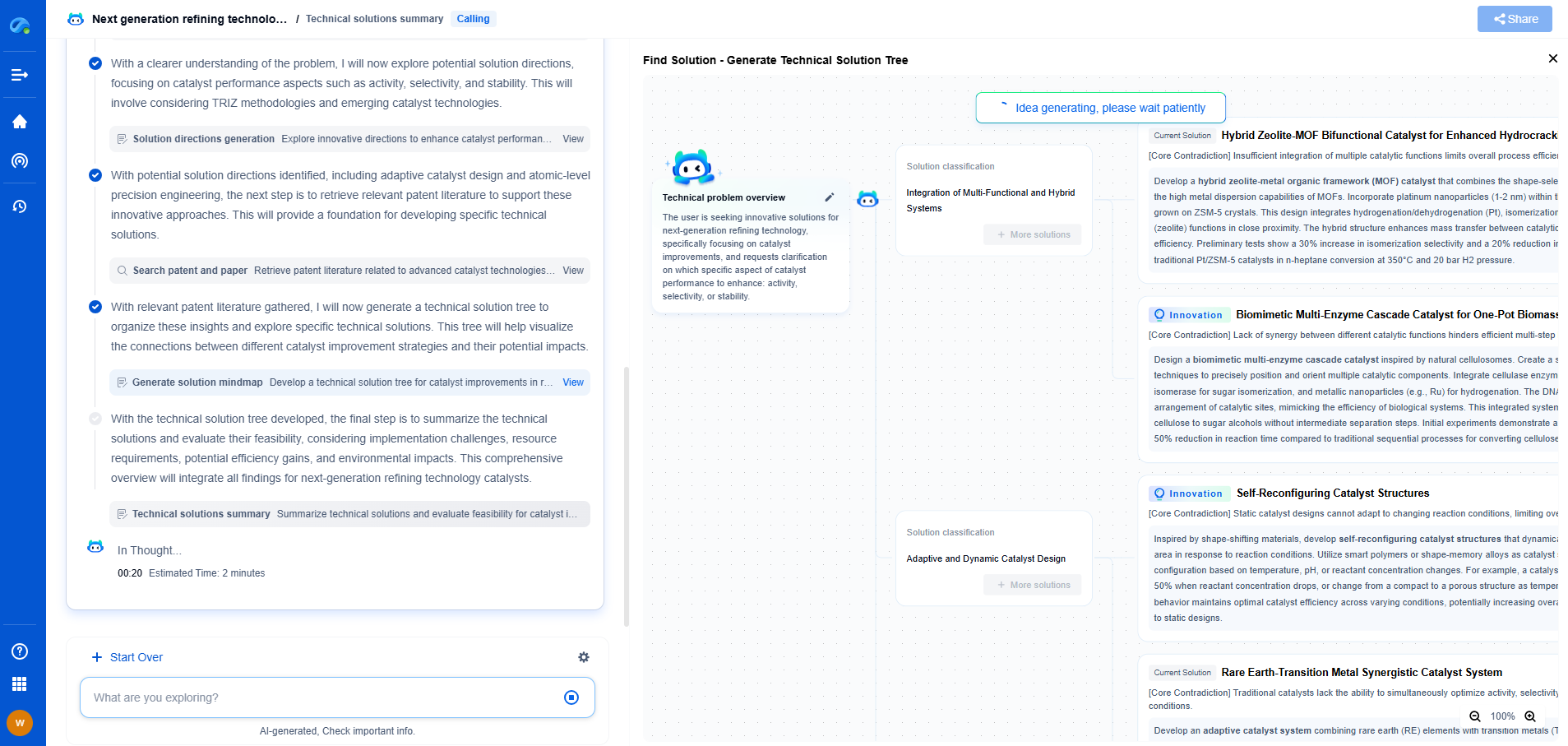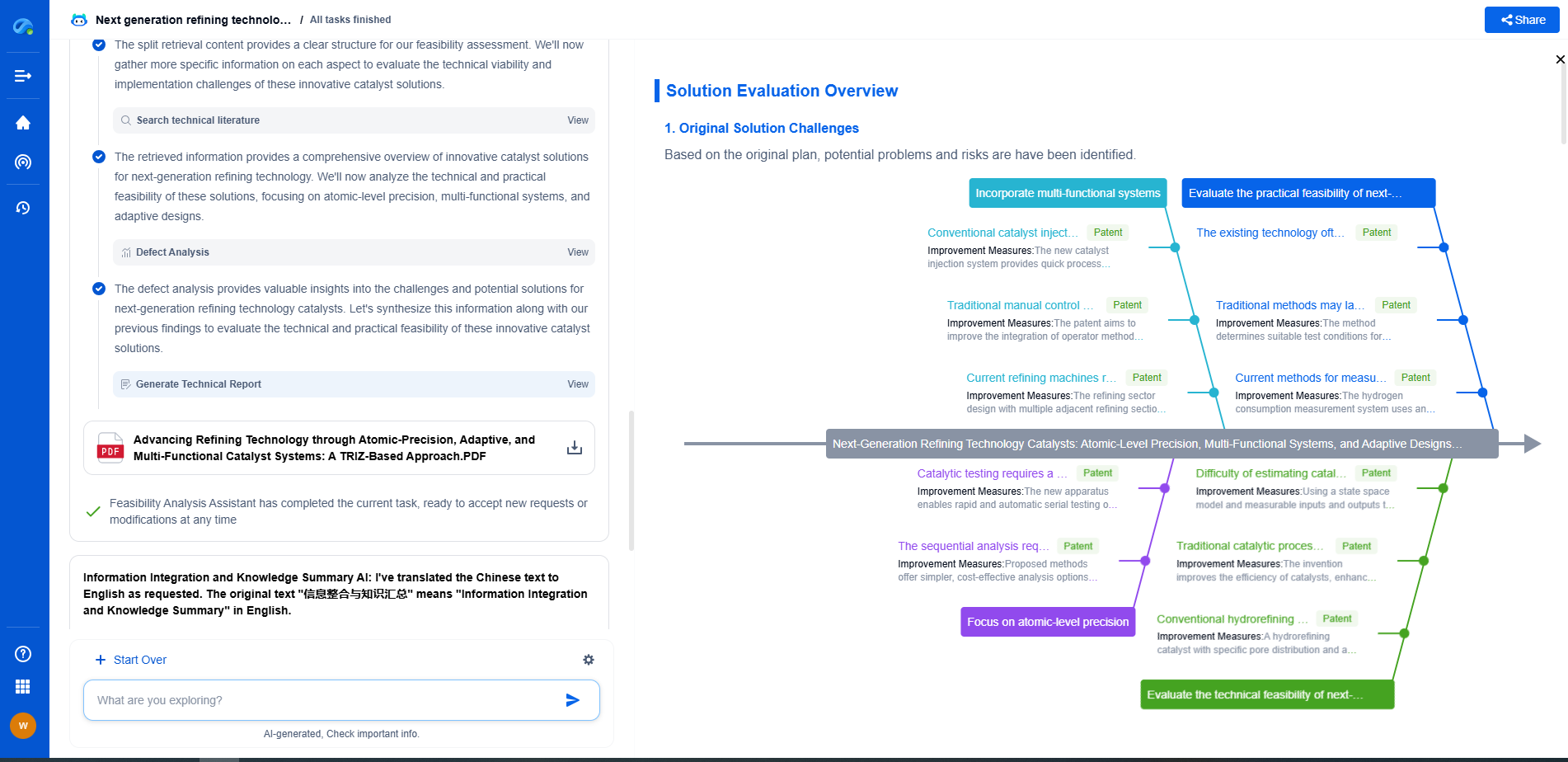AI in 5G Networks: Self-Healing and Optimization
JUN 27, 2025 |
As 5G networks continue to roll out globally, they promise unprecedented speed and connectivity, paving the way for innovation across industries. However, the complexity and scale of these networks require sophisticated management to ensure reliability and efficiency. This is where Artificial Intelligence (AI) comes into play, offering solutions for self-healing and optimization in 5G networks. In this blog, we explore how AI enhances 5G capabilities and contributes to seamless network operations.
The Role of AI in 5G Networks
AI is a transformative force in the telecommunications industry, especially within the realm of 5G networks. The integration of AI into 5G infrastructure allows for real-time data analysis, predictive maintenance, and automated troubleshooting, which are crucial for maintaining high performance standards. AI enables networks to swiftly adapt to changing conditions, optimize traffic routing, and identify potential issues before they impact service quality.
Self-Healing Capabilities
One of the significant advantages of AI in 5G networks is its self-healing capability. Self-healing refers to the network's ability to automatically identify and resolve faults without human intervention. This is crucial for maintaining uninterrupted service, especially in mission-critical applications like autonomous vehicles or remote surgery.
AI-driven self-healing mechanisms use machine learning algorithms to monitor network performance continuously. These algorithms detect anomalies by comparing real-time data with established patterns. Once an anomaly is detected, the system can either automatically reroute traffic, reallocate resources, or alert technicians for further investigation. This proactive approach minimizes downtime and reduces maintenance costs, enhancing overall network reliability.
Optimization through AI
Optimization is another area where AI significantly impacts 5G networks. Network optimization involves making adjustments to improve efficiency, reduce latency, and enhance user experience. AI-driven optimization leverages massive amounts of data generated by network devices to predict traffic patterns, manage load balancing, and optimize resource allocation effectively.
By utilizing AI, network operators can ensure that bandwidth is allocated efficiently, reducing congestion and maximizing throughput. Additionally, AI can forecast peak usage times and adjust resources accordingly, ensuring that users experience seamless connectivity even during high-demand periods. This dynamic adjustment of resources leads to improved network performance and customer satisfaction.
AI’s Impact on Network Security
Security is a paramount concern in 5G networks, given the increased connectivity and access points. AI plays a crucial role in enhancing network security by detecting and mitigating threats in real-time. Machine learning models can identify suspicious patterns and anomalies that may indicate a cyber-attack or unauthorized access attempts.
AI-driven security systems can adapt to evolving threats, offering a robust defense against intrusions. By automating threat detection and response, AI enhances the resilience of 5G networks, ensuring that sensitive data remains protected and network integrity is maintained.
Challenges and Future Perspectives
Despite the benefits, integrating AI into 5G networks comes with challenges. Ensuring data privacy, managing the complexity of AI algorithms, and the potential for over-reliance on automated systems are concerns that need addressing. Moreover, the continuous evolution of AI technology necessitates ongoing training and updates to maintain effective network management.
Looking forward, the synergy between AI and 5G networks is expected to drive innovation in various sectors, including smart cities, IoT, and augmented reality. As AI technology advances, its capabilities in network management will also evolve, leading to more resilient, efficient, and secure 5G networks.
Conclusion
AI is revolutionizing the way 5G networks operate, bringing self-healing and optimization capabilities that are essential for modern connectivity demands. By harnessing the power of AI, network operators can enhance service reliability, optimize performance, and fortify security measures. As we continue to explore the potential of AI in telecommunications, the future of 5G networks looks promising, poised to support the next wave of technological advancements.
Unlock Next-Gen Innovation in Communication Technology with Patsnap Eureka
The field of communication technology is evolving at breakneck speed—from 5G and satellite systems to next-gen wireless protocols and quantum communications. Staying ahead demands more than just information—it requires strategic insights, real-time patent intelligence, and a deep understanding of technological trajectories.
Patsnap Eureka, our intelligent AI assistant built for R&D professionals in high-tech sectors, empowers you with real-time expert-level analysis, technology roadmap exploration, and strategic mapping of core patents—all within a seamless, user-friendly interface. Whether you're optimizing signal processing designs, navigating 3GPP standards, or exploring IP strategies for IoT and 6G networks, Eureka helps you move faster, think deeper, and innovate smarter.
Try Patsnap Eureka today—and see how it can transform the way you work across the entire communication technology innovation lifecycle.
- R&D
- Intellectual Property
- Life Sciences
- Materials
- Tech Scout
- Unparalleled Data Quality
- Higher Quality Content
- 60% Fewer Hallucinations
Browse by: Latest US Patents, China's latest patents, Technical Efficacy Thesaurus, Application Domain, Technology Topic, Popular Technical Reports.
© 2025 PatSnap. All rights reserved.Legal|Privacy policy|Modern Slavery Act Transparency Statement|Sitemap|About US| Contact US: help@patsnap.com

